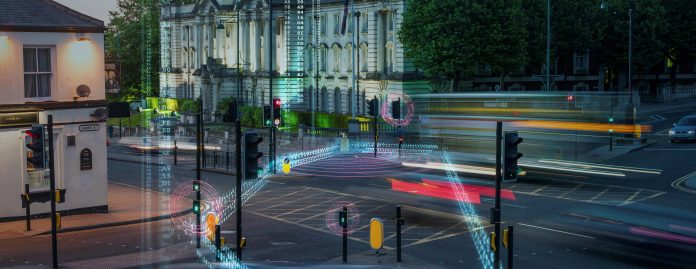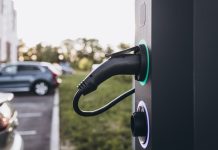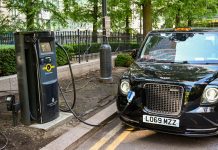Wilke Reints, Managing Director of Siemens Mobility Limited’s Intelligent Traffic Systems business, turns our thoughts towards intelligent traffic systems (ITS) including comment on traffic volumes, air quality and electric vehicles
For many years, intelligent traffic systems suppliers, such as Siemens Mobility, have worked alongside local authorities and traffic management teams across the country. They’ve developed and deployed a wide range of sophisticated solutions to keep traffic moving safely across their road networks. These play a largely unseen role in keeping people and goods moving to help continued economic development – despite the huge demands that are placed on our very constrained road and transport network.
This provides authorities with the tools to improve air quality in their cities and urban areas, improve road safety by enforcing speed limits, create safe spaces for children around their schools and provide the infrastructure needed to support the growth in electric vehicle ownership. These interventions are often necessary to deliver targeted improvements and are proven to work, but they often require strong and clear leadership to make them happen. As the UK responds to the Government’s plans to ‘Build Back Better’ after the Coronavirus pandemic, the transport industry has a major role to play in getting Britain moving again; safely, healthily and efficiently.
Those working on our transport networks, which are designated as critical national infrastructure, have played a key role in keeping networks operational throughout the recent COVID-19 restrictions. Although the pandemic was an unwanted and unprecedented event, it provided a unique opportunity to understand and assess the impact that interventions and changes in travel behaviour can have on our daily lives and wellbeing. It certainly put into very clear focus some of the issues that councils face on air quality.
Traffic volumes & air quality
Following the announcement that only essential journeys could be made, there was inevitably a sudden and dramatic reduction in the number of vehicles on our roads, with traffic volume down to as little as 22% of the normal pre-pandemic volume. As a result, we saw significant improvements in local air quality and with it, wide-ranging environmental and health benefits. In London, for instance, nitrogen dioxide levels reduced by around 35% during lockdown (compared to the average reading in January 2020), with the air quality in the city’s square mile recorded as being cleaner by more than a third. However, as vehicle numbers in most towns and cities return to close to pre-lockdown levels, air quality is once again deteriorating.
To help authorities address this issue, towns and cities are looking to deploy targeted Clean Air Zones (CAZ), which are proven to significantly reduce the volume of nitrogen oxides and particulates in the air. A focused and highly effective approach, camera-based CAZ enforcement solutions discourage older, higher-polluting vehicles from entering specific, designated areas.
These systems were championed and driven through in London, where they have been at the heart of the capital’s congestion charging zone and proved their effectiveness for well over a decade. And after ten months of operation of the new Ultra Low Emission Zone, research by the Mayor of London’s Office reported that nitrogen oxide emissions from road transport in the central zone had reduced by 44% and carbon dioxide emissions had reduced by 12,300 tonnes. On an average day, 17,400 fewer, higher-polluting vehicles were driven in the zone.
Increasing the number of electric vehicles
Of course, air quality is also being positively impacted by the rapidly increasing number of electric vehicles (EVs) on our roads and recent announcements by the UK Government reinforce their importance to both climate change and the green economy. Having already brought forward its target to ban sales of diesel and petrol vehicles from 2040 to 2035, in November 2020, the Government revised the target again to 2030. Hybrid vehicle sales will continue until 2035 to support the transition, although consumer demand and improvements in technology are likely to see an earlier phase-out.
As an industry, we will continue to work with councils and industry partners to support the increasing use of EVs with the rollout of reliable, rapid chargers. This will help to deliver an efficient transport network and a cleaner, healthier, more sustainable and more attractive environment. In London, to support the phasing out of the iconic, diesel-powered black cabs, Siemens Mobility is providing the necessary charging infrastructure for their all-new electric replacements.
Intelligent traffic systems (ITS)
Our sector focuses on innovation and driving new technology, identifying areas where we can do things differently to the benefit of our customers, our partners and the travelling public.
Take the humble traffic light, which day in, day out keeps traffic moving safely and efficiently across our networks, reducing travel times, emissions and fuel consumption. Through intelligent detection equipment, changes to the timing and sequencing of traffic signals can be made in real time to keep road users moving efficiently, with an increasing consideration for all road users, including pedestrians and cyclists and not just car drivers.
As cars and people become more connected through technology, we can gather more data to inform meaningful policy-driven decisions, for example, to meet air quality targets, to make cycling and walking easier, or to encourage the use of public transport. Sitraffic FUSION is the latest real-time adaptive control system to be developed with trials now underway at a number of ‘living lab’ sites in London.
Throughout 2020, ITS suppliers have not only met the challenge of keeping the country’s road networks operating safely and efficiently, but have also continued to drive new product and process developments which will benefit traffic managers and infrastructure operators, and ultimately improve the Nation’s mobility, health and wellbeing. That’s quite a challenge, but it’s one the industry is confident and capable of meeting.
*Please note: This is a commercial profile











